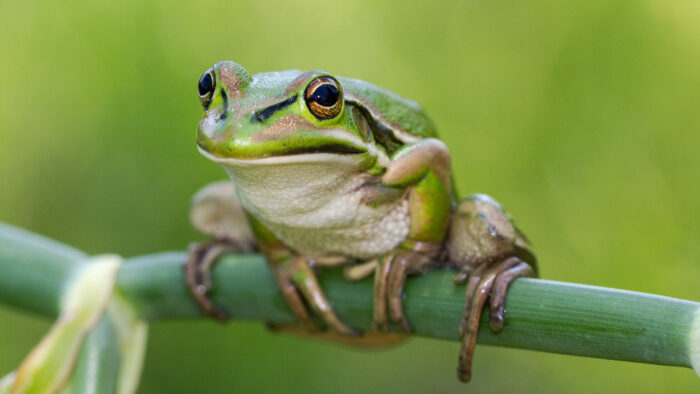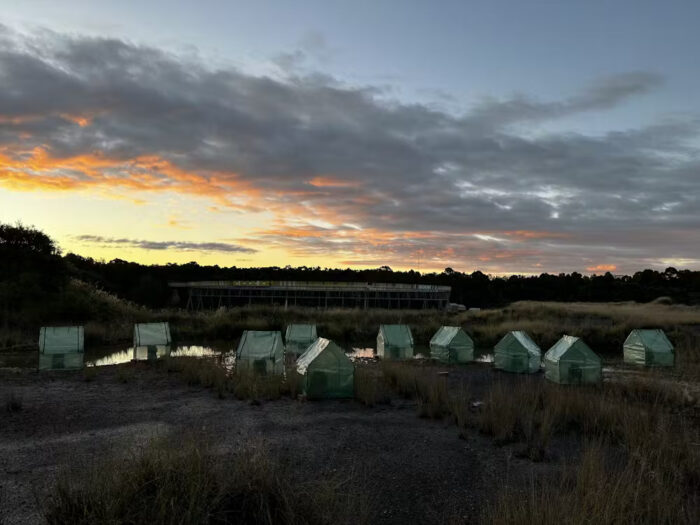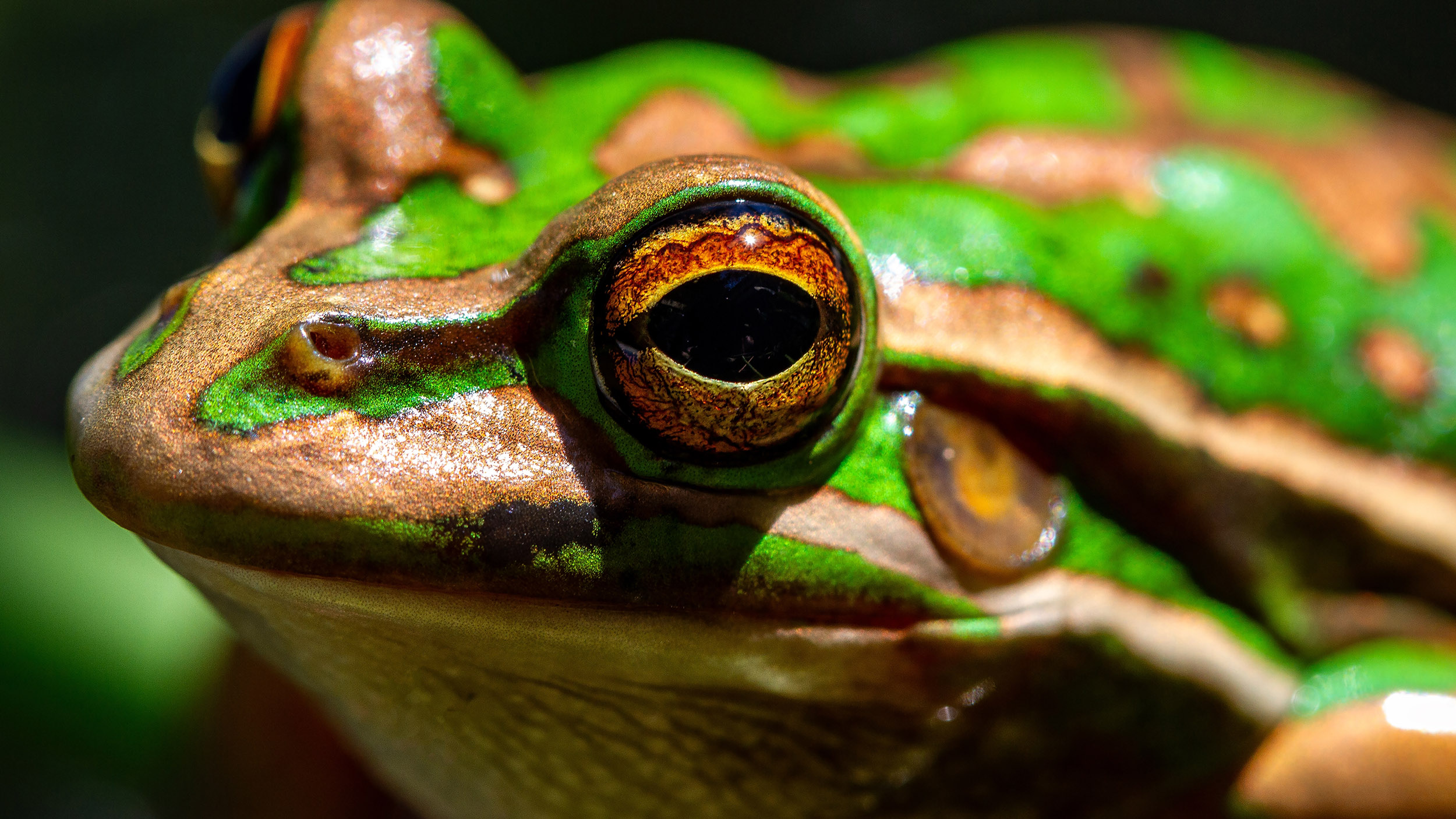It’s not easy being green, as one of our greatest sages is fond of remarking. The latest example of this universal fact is the chytrid fungus, a pernicious pest fond of takingup residence on the delicate skin of frogs worldwide.
The fungus originated in Asia but has spread across the globe in the last few decades and is responsible for the ongoing decline of more than 500 amphibian species. At least 90 are now considered extinct as a result of chytrid.
But in research recently published in the journal Nature, a group of researchers led by biologist Anthony Waddle has proposed a low-cost, easily implemented rejoinder to the fungus. And if it isn’t a solution, it’s at least a stop-gap measure that could give our froggy friends a webbed foothold in their ongoing battle against chytrid.
Well, the amphibious equivalent, in any case. And the best part is, you can pitch in and make one yourself.
“Outbreaks of chytrid are more common in cold winter months — just like seasonal human flu,” Waddle observed on The Conversation. “We found a way to combat these winter outbreaks using heat. Our purpose-built ‘frog saunas’ allow affected amphibians to warm up and bake off their infections. They are so simple you can build a frog sauna using supplies from the hardware store.”
Testing the theory
After noting that at least some frogs “select temperatures that reduce or eliminate chytrid infections, when given the opportunity,” Waddle and his colleagues wondered if regular access to higher temperatures could assist the amphibians in surviving the fungus.

The study focused on green and golden bell frogs, a species native to Australia. However, the researchers believe frog saunas could help species worldwide. Photo: Shutterstock
To test the theory, the researchers conducted experiments on 66 chytrid-infected green and golden bell frogs. One group of frogs had access to various temperatures and could choose the environment they liked best. The scientists also provided a second group with a set, warm temperature and a control group with a lower temperature.
The results were promising. The infections of the first group cleared up nicely, those of the second group cleared up but more slowly, and those of the control group remained infected.
Even better, the “heat-cured” frogs were “22 times more likely to survive the second infection than the 23 frogs that were heat-treated but not previously infected. So frogs cured with heat acquire resistance to future infections,” Waddle reported.
In the wild
Finally, Waddle and his team attempted to replicate the lab successes in a controlled outdoor setting with 239 frogs. The team constructed frog saunas in an outdoor enclosure using a selection of widely available, inexpensive materials — a drop-over greenhouse, ten-hole masonry bricks, black paint, and cable ties.
The area comprised sunny and shady areas, with and without saunas. Then, the team allowed the frogs, half of which were infected with the fungus, to hop around as they pleased.
The result? Major success.

Frog saunas in green and golden bell frog habitat. Photo: Anthony Waddle
“Frogs flocked to the sunny saunas, heated up their little bodies, and quickly fought off infection,” the scientists reported. “Think of frog saunas as little factories that pump out healthy, chytrid-resistant frogs.”
The team is already placing frog saunas out in the wild in green and golden bell frog habitat. And if you live in an area with both frogs and the chytrid fungus, they encourage you to do the same. Click here to find out how.
“We believe they would be best suited to supporting populations of Australian green and golden bell frogs, but they could be useful for other species too,” Waddle concluded.





